- Joined
- Feb 13, 2008
- Messages
- 5,398
- Reaction score
- 8
- Points
- 0
- Location
- Khimki
- Website
- tigerofsiberia.livejournal.com

For the first time after a failure of launch on Feb 1, 2011, a mission will be carried out on a Rokot/Briz-KM launch vehicle stack. The problems with the upper stage are reported to be fixed and that's confirmed by multiple tests at Khrunichev plant.
Today a cluster of satellites is to be launched to a low orbit:
- Gonets-M satellite, the customer is Gonets SatCom company
- Rodnik satellite, the customer is Russian MOD
- Strela-3 (17F13), the customer is Russian MoD
- MiR (called so after Mikhail Reshetnev) technology demonstrator satellite, the customer and manufacturer is the same - Reshetnev Company


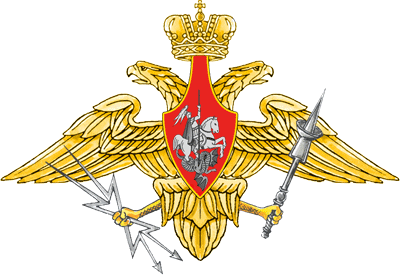
Launch location:
Plesetsk Launch pad no. 133/3 62°53'13.35"N, 40°50'48.30"E
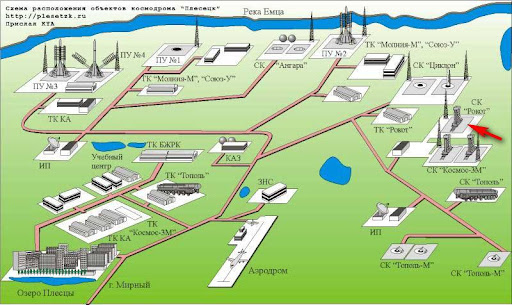
Launch dates and times:
Time Zone |
Australia - Sydney/AEST
|
Moscow / MSK/
|
Universal / UTC
|
Washington / EDT
Launch time (Primary):
|
1:35:34 p.m.
|
05:35:34
|
01:35:34
|
9:35:34 p.m.
on:
|
Jul. 28, 2012
|
Jul. 28, 2012
|
Jul. 28, 2012
|
Jul. 27, 2012
{colsp=5}
[highlight][eventTimer]2012-07-28 01:35:34?before|after;%dd% Days %hh% Hours %mm% Minutes %ss% Seconds %c%[/eventTimer] The Clustered Launch on Rokot[/highlight]
{colsp=5}
The last payload, MiR satellite is to be deployed at 7:20:33 MSK.
{colsp=5}
[highlight][eventTimer]2012-07-28 03:20:33?before|after;%dd% Days %hh% Hours %mm% Minutes %ss% Seconds %c%[/eventTimer] MiR satellite separation[/highlight]
Live Coverage Of The Launch:
None available, sorry.
PAYLOAD 1
Gonets-M (Russian: Messenger) communications satellite:
Gonets-M are upgraded versions of the Gonets satellites, a civilian derivate of the military Strela-3 satellite system. They are operated in the Gonets-D1M constellation. The Gonets system was offered to support international health organizations to meet their global communications needs for the transfer of medical data and records to remote sites.
After two prototype Gonets satellites the operational satellites were to be deployed in the Gonets-D1 constellation of 12 satellites consisting of 6 satellites in 2 orbital planes between 1996 and 1998. Each satellite had a single simultaneous earth-space and space-earth channel. On-board storage was 12 Mbits of data, with a transmission rate of 2.4 kbit/sec. Attitude control was achieved through gravity-gradient stabilization. The electrical power system, provided by solar cells and nickel-hydrogen batteries, provided an average 40 W for the payload which was designed to operate for five years.
In the commercial variant, the satellites, known as Gonets (Messenger), were capable of store-dump communications on 2-3 channels in the 2004-400 MHz band with a transmitter output power of 10 W. Data transmission rates available include 2.4 kbits/s, 9.6 kbit/s, and 64 kbit/s with an onboard storage capacity of 8 Mbytes. A handheld user terminal (UT-P) resembles a cellular phone and weighs only 1-3 kg. Finally the 250 kg Gonets were to be deployed at 1,350 km at 82.5 degrees, similar to the Strela-3 satellites, but distributed among six orbital planes for a total constellation of 36 spacecraft. This infrastructure would ensure a mean communication waiting time of less than 20 minutes with more than 80% probability.
Gonets-M
Customer:
|- Gonets SatCom company (http://www.gonets.ru/english.php)
Prime contractor:
|- JSC "Information Satellite Systems Reshetnev Company"
GRAU index:
|- 14F132
Platform:
|- Strela-3
Mass at Separation:
|- 280 kg
Dry Mass:
|- ?
Stabilization:
|- Gravity boom
Batteries:
|- 40 W
Life time:
|- 5 years
|
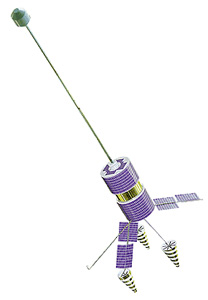
PAYLOAD 2
Rodnik (Russian: Creek) communications satellite:
The same thing as Gonets-M, but for military use.
PAYLOAD 3
Strela-3 (Russian: Arrow) communications satellite:
Strela-3 was second generation of strategic store-dump military communications satellite. Development of this generation to replace the first generation Strela-1M and Strela-2M satellites began in 1973.
Heavier than the Strela-1M, it was launched in sixtuplets on Tsiklon-3 boosters. The operational constellation consisted of twelve spacecraft in two orbital planes, spaced 90 degrees apart. The spacecraft had a cylindrical body (height: 1.50 m, diameter: 1.00 m) with a gravity-gradient boom, which was extended on-orbit to provide passive attitude stabilization. These satellites had a single simultaneous earth-space and space-earth channel. On-board storage was 12 Mbits of data, with a transmission rate of 2.4 kbit/sec. NII-TP was responsible for the communications payload.
The first satellites were deployed in 1985 and the system was accepted into military service in 1990. Two years later Strela-3 replaced the Strela-1M system and after 1994 also the Strela-2M.
Due to the retirement of the Tsiklon-3 launcher, the Strela-3 satellites were switched in 2002 to the Kosmos-3M booster, which can launch two satellites at one time. In 2008 the Rokot-KM was introduced, which enables the launch of tripletts.
A civilian version of the Strela-3 is offered as the Gonets, which shared some launches with Strela-3 satellites.
Strela-3
Customer:
|- MoD
Prime contractor:
|- JSC "Information Satellite Systems Reshetnev Company"
GRAU index:
|- 17F13
Platform:
|- Strela-3
Mass at Separation:
|- 225 kg
Dry Mass:
|- ?
Stabilization:
|- Gravity boom
Dimensions (stowed):
|- Height - 1.5m, width - 1.0m
Batteries:
|- 50 W
Life time:
|- 1 year
|
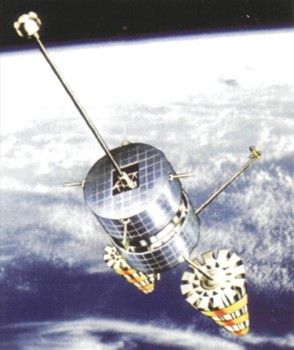
PAYLOAD 4
MiR (and acronym for: Mikhail Reshetnev) education and tech demosntrator satellite., has sample imstrumentation for testing is space, few webcams, educational and amateur radio payload.
Strela-3
Customer:
|- ISS Reshetnev Company
Prime contractor:
|- JSC "Information Satellite Systems Reshetnev Company"
GRAU index:
|- -
Platform:
|- Yubileyny
Mass at Separation:
|- ?
Dry Mass:
|- 65 kg
Stabilization:
|- Gravity boom
Dimensions (stowed):
|- ?
Batteries:
|- ?
Life time:
|- ?
|

Launch Vehicle:

Rockot / Briz-KM
Prime contractor:
|- Khrunichev State Research And Production Space Centre, Moscow
GRAU Index:
|- Converted 15A35 (Common name: UR-100NUTTKh)
Height:
| 29.15 m with upper stage and payload fairingDiameter:
| 2.5 m (body)Liftoff mass:
| 107.5 metric tonnesPayload mass (with Briz-KM to LEO):
| 1 950 kg max1st stage:
|- 3 x RD-0233 & 1 x RD-0234 engines
- Length 17.2 m
- Propellants: UDMH & N2O4
- Thrust in vacuum 2080 kN (520 x 4)
- Thrust at sea level 1880 kN (470 x 4)
- ISP 310 s / 285 s
- Burn time 121 s
2nd stage:
|- 1 x RD-0235 engine & 1 x RD-0236 vernier engine
- Length 3.9 m
- Propellants: UDMH & N2O4
- Thrust in vacuum 240 kN + 15.76 kN (vernier)
- ISP 320 s (293 s vernier)
- Burn time 183 s
Upper Stage:
|
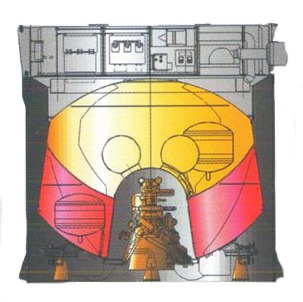
- GRAU Index: -
- Common Name: Briz-KM (meaning Breeze)
- Designer & Manufacturer: Khrunichev Space Centre
- Dimensions: Length 2.5 m, Diameter 2.5 m
- Empty Mass 1.42 tonnes
- Propellants 5055 kg (UDMH + N2O4)
- Flight time: no less than 7 hours
- Main Engine: 1 X С5.98М
- Thrust in vacuum 2.0 tonnes of force
- ISP 328,6 s
- Main engine restarts: up to 8 times
- Correction Engine: 4 X 11D458
- Thrust in vacuum 400 N each
- ISP 252 s
- RCS Engines: 12 X 17D58E
- Thrust in vacuum 13.3 N each
- ISP 274 s
Payload Fairing:
|- Diameter 2.62 m
- Length 6.74 m
The vehicle's reliability statistics according to http://www.spacelaunchreport.com/log2012.html#stats:
Code:
================================================================
Vehicle Successes/Tries Realzd Pred Consc. Last Dates
Rate Rate* Succes Fail
================================================================
Rokot/Briz/K(M) 14 16 .88 .83 0 02/01/11 1994-
[SIZE=1][U]References[/U]
[URL]http://www.federalspace.ru[/URL]
[URL]http://tvroscosmos.ru[/URL]
[URL]http://www.tsenki.com[/URL]
[URL]http://www.iss-reshetnev.ru[/URL]
[URL]http://space.skyrocket.de[/URL]
[URL]http://cosmopark.ru[/URL]
[URL]http://www.khrunichev.ru[/URL]
[URL]http://www.eurockot.com[/URL]
[URL]http://www.plesetzk.ru[/URL]
[URL]http://forum.nasaspaceflight.com[/URL]
[URL]http://www.novosti-kosmonavtiki.ru[/URL]
[URL]http://www.spacelaunchreport.com[/URL]
[/SIZE]
